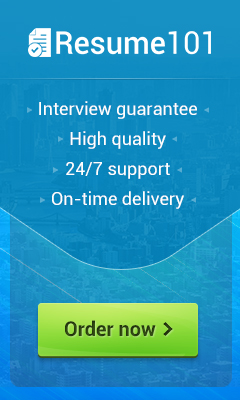

Application Review Process – How to Speed It Up
We’ve all been there before. You have a stack of resumes or employment applications on your desk and a looming deadline to fill a specific job position. Whether they are paper applications, emails or electronic files, the task is just as daunting. Somewhere in this pile of paperwork is the perfect candidate, but to find the right one you need to sort through all the less qualified ones.
Thankfully, application review doesn’t have to be such a manual process. An automated job application system, if set up correctly, can be a tremendous help in reviewing resumes and job applications more quickly and ensuring that your top candidates don’t fall through the cracks. And it doesn’t take as much time as you might think to set up a good automated system that makes your review process much quicker and more efficient. Here are some elements of an automated job application system that can help you speed up your application review process.
Setting up an Online Application
Collecting job applications through an online application process, rather than email or paper, is the first step to making your application review process quicker and more efficient. On an online job application you can ask candidates to fill in information and answer questions that can help you quickly determine if they are a potential match to your job, often without requiring you to even read their resumes. It is much easier and quicker to scan through a table of answers or filter/sort based on what you are looking for.
For example, if you are only looking for local candidates, by collecting information on a candidate’s location you can quickly filter/sort and remove applications that are not in your local area. Similarly, if you are looking for somebody with a certain degree or professional certification, you can ask this on your online application and then quickly see which applications match your criteria and skip or remove the ones that do not.
Of course, for your online application to be useful you need to be able to customize the questions and add your own company or job-specific questions. With an automated Applicant Tracking System (ATS) you can build your own questions with the Questionnaire Builder and attach them to your online application page. And if candidates do not fill out the questionnaires during the online application, you can always send them an email with a link to complete the questionnaire and add it to their application.
Resume Parsing
Even with an online application system, you will still likely receive resumes from candidates directly, usually by email. So your system will ideally be able to import these resumes and parse useful information from the resume automatically. At the very least, your automated system needs to be able to extract all text from a resume for searching later, regardless of its file format (i.e. Microsoft Word, PDF, RFT, HTML, etc). Most automated systems that support resume parsing will also be able to extract the contact information from a resume, and this alone can be a tremendous time saver. Rather than having to re-key the contact data from the resume into your database, you will already have the person’s contact information from the resume.
With an Applicant Tracking Systems such as ApplicantStack you have a resume import mechanism where you can import resumes that you receive from candidates. You can upload resume files or even emails you receive from candidates with resume attachments into the system. All resumes are automatically parsed and the candidate’s contact information is extracted automatically.
Screening Applications
Nothing is more frustrating than looking through a stack of applications and finding that the majority don’t meet the minimum requirements for the job. To save you from having to sift through all these unqualified candidates, you can implement simple screening rules for your applications. One way to do this is to build rules that assign each candidate a score based on their answers to your application questions or resume content.
For a simple example, if your job requires a college degree, you could ask the candidate on the online application if they have a college degree. You could then build a scoring rule that “knocks out” candidates that answer the question as “No”. When you look at your applications in your database, you can filter out all the “knocked out” candidates and focus your attention on the ones that pass your minimum job requirements.
When building rules based on the resume content, you need to be careful that you don’t make your rules too strict. It’s tempting to try to build a comprehensive set of rules that will effectively “match” a candidate to a job automatically. But the reality is that resumes come in all kinds of formats. If your rules are too strict you will often weed out a large number of candidates who may be perfectly good matches to your job but don’t have a resume in a format that the parsing engine understands.
Browsing your Applications
Even with an online application, resume parsing and screening rules, at some point you will need to actually dig in and review the applications and resumes. At this step a well-designed database browser is crucial. Once you set your filter and drill in to look at an application, you need to assess how quickly you can:
- Flag and/or determine the next steps for this application,
- Bring up all the different parts of the application (i.e. question answers, resume, cover letter, etc), and
- Move on to the next applicant.
In many systems, just moving to the next candidate requires multiple clicks – go back to your list, possibly reset your filter, scroll and determine where you were in the list, and then click the next person.
For example, ApplicantStack was designed to make the process of browsing your applications quick and easy:
- Setting the next action for a candidate or assigning a rating only takes a couple of clicks.
- All data is displayed on the same screen, including the resume preview (i.e. no need to open the resume file).
- You can move between applications with Next / Previous links without having to go back to your list.
So, if you’d like to automate and accelerate your application review process, look into online software solutions designed to manage processes for recruiting, applicant tracking, employment screening, staffing, resume management, and online employment applications. Many of these fall into the category of Applicant Tracking System, but you’d be well served to check them out. Importantly, many of them are available in a Software-as-a-Service model and are designed to be easy to use and affordable even for small to mid-sized businesses.
